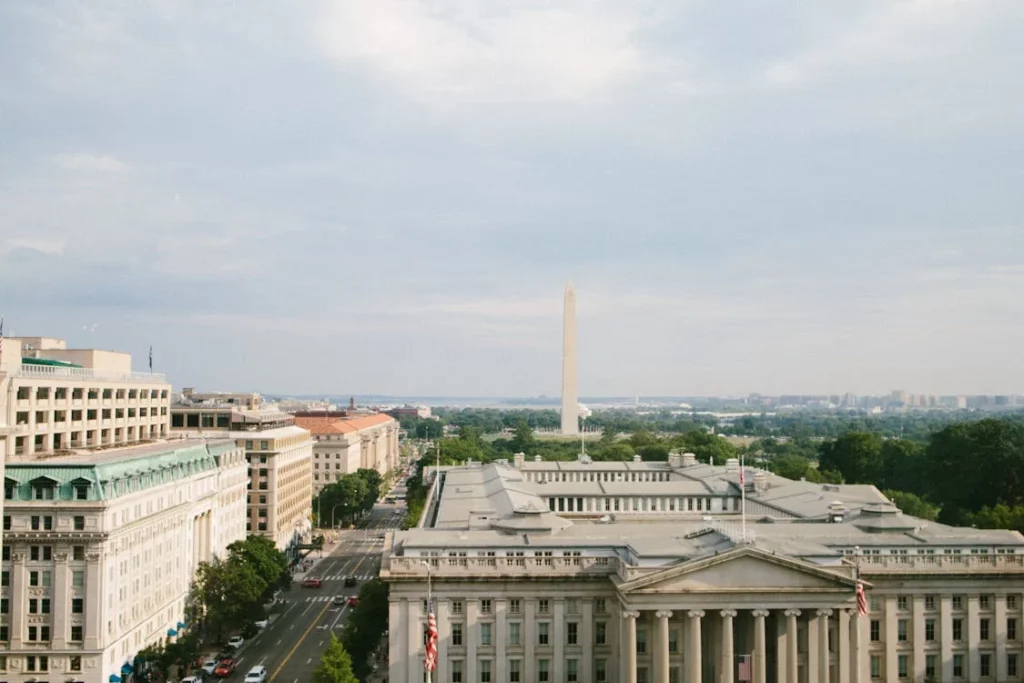
Every four years, businesses brace themselves for the U.S. presidential election and its potential ripple effects across the economy. While political outcomes may differ, certain trends remain consistent across election cycles—volatility in the markets, shifts in business strategy, and changes in regulatory environments. As we navigate yet another election cycle, it’s valuable to look back at previous elections to understand how the political landscape shapes the business environment.
The 2000 Election: A Historic Deadlock and Market Reaction
The 2000 U.S. presidential election between George W. Bush and Al Gore is remembered for its controversial outcome, leading to recounts and legal battles. During the uncertainty of the recount period, markets experienced heightened volatility. The S&P 500 fell by nearly 8% in the weeks following Election Day, reflecting widespread anxiety among investors unsure of the future political leadership.
Businesses across industries became more conservative in their decisions—delaying investments, freezing hiring, and scaling back on expansion plans. The uncertainty highlighted how election ambiguity can stymie business growth, with leaders preferring to wait until a clear winner emerges before making major decisions.
2008 Election: The Great Recession’s Shadow
The 2008 election saw Barack Obama ascend to the presidency amid the worst financial crisis since the Great Depression. The collapse of Lehman Brothers, the bursting of the housing bubble, and massive government bailouts defined the economic backdrop of this election.
In the months leading up to and following the election, businesses, particularly in financial services and real estate, saw monumental shifts in operations. The Obama administration’s focus on recovery, including the passage of the American Recovery and Reinvestment Act, impacted industries across the board. Stimulus spending and increased regulation, especially through the Dodd-Frank Act, fundamentally altered how businesses approached risk, compliance, and financial stability.
Companies in banking and investment saw increased oversight, while renewable energy sectors and tech businesses, benefiting from government incentives, found new opportunities for growth. This election cycle demonstrates how external crises, compounded by political changes, can lead to long-lasting business transformation.
2016 Election: Populism and Policy Shifts
The 2016 election of Donald Trump brought sweeping changes to U.S. business policy, especially for sectors like manufacturing, healthcare, and trade. Trump’s “America First” agenda prioritized deregulation, corporate tax cuts, and protectionist trade policies.
Industries such as manufacturing and energy benefitted from deregulation, seeing reduced compliance costs and increased domestic production. At the same time, the healthcare sector was caught in policy uncertainty due to efforts to repeal and replace the Affordable Care Act, while businesses involved in international trade were forced to rethink supply chains in response to tariffs and trade wars, particularly with China.
This election underscored the potential for policy reversals and sector-specific impacts, emphasizing the importance of flexibility and adaptability for business leaders. It also highlighted how populist platforms could disrupt global trade practices, forcing businesses to reconsider long-term strategies that had once relied on predictable international markets.
2020 Election: Pandemic-Driven Uncertainty
The 2020 election, held amid the COVID-19 pandemic, presented a different kind of uncertainty. The economic downturn caused by widespread lockdowns and shifting consumer behavior put enormous pressure on industries such as hospitality, retail, and travel, while boosting sectors like e-commerce and technology.
The election saw President Joe Biden’s victory, which ushered in renewed focus on healthcare, labor policies, and climate change. For businesses, this meant adapting to a new era of increased regulation, particularly around labor laws and environmental standards. At the same time, Biden’s promise of economic stimulus helped stabilize markets and renewed optimism for a post-pandemic recovery.
During this cycle, businesses in certain sectors thrived as demand for digital solutions surged, while those dependent on physical presence faced unprecedented challenges. The 2020 election serves as a reminder that external events—like a global pandemic—can have more significant impacts on business than political transitions alone.
Lessons for Business Leaders Today
As we look toward the current election cycle, businesses should take note of several key lessons from the past:
Prepare for Volatility: Uncertainty is inevitable during election cycles, so businesses should focus on financial resilience and flexibility. Establishing contingency plans and managing cash flow carefully can help mitigate risk.
Stay Informed on Policy Changes: New administrations often bring shifts in tax policies, regulatory changes, and trade agreements. Keeping a pulse on these changes will allow business leaders to adjust their strategies accordingly.
Sector-Specific Impacts: Different sectors will feel the effects of political changes in unique ways. Whether it’s healthcare, energy, or tech, businesses should evaluate how their industries may be impacted by policy shifts and election outcomes.
Long-Term Thinking: While election cycles create short-term uncertainty, successful businesses focus on long-term strategies that transcend political shifts. Prioritizing innovation, adaptability, and customer relationships will help businesses weather any political storm.
Election cycles will always create waves of uncertainty, but they also provide opportunities for businesses to adapt, grow, and find new ways to succeed. By studying past cycles, business leaders can better prepare for the future, regardless of political outcomes. In the end, staying informed, being adaptable, and focusing on long-term resilience will help businesses navigate the evolving landscape of U.S. politics.

